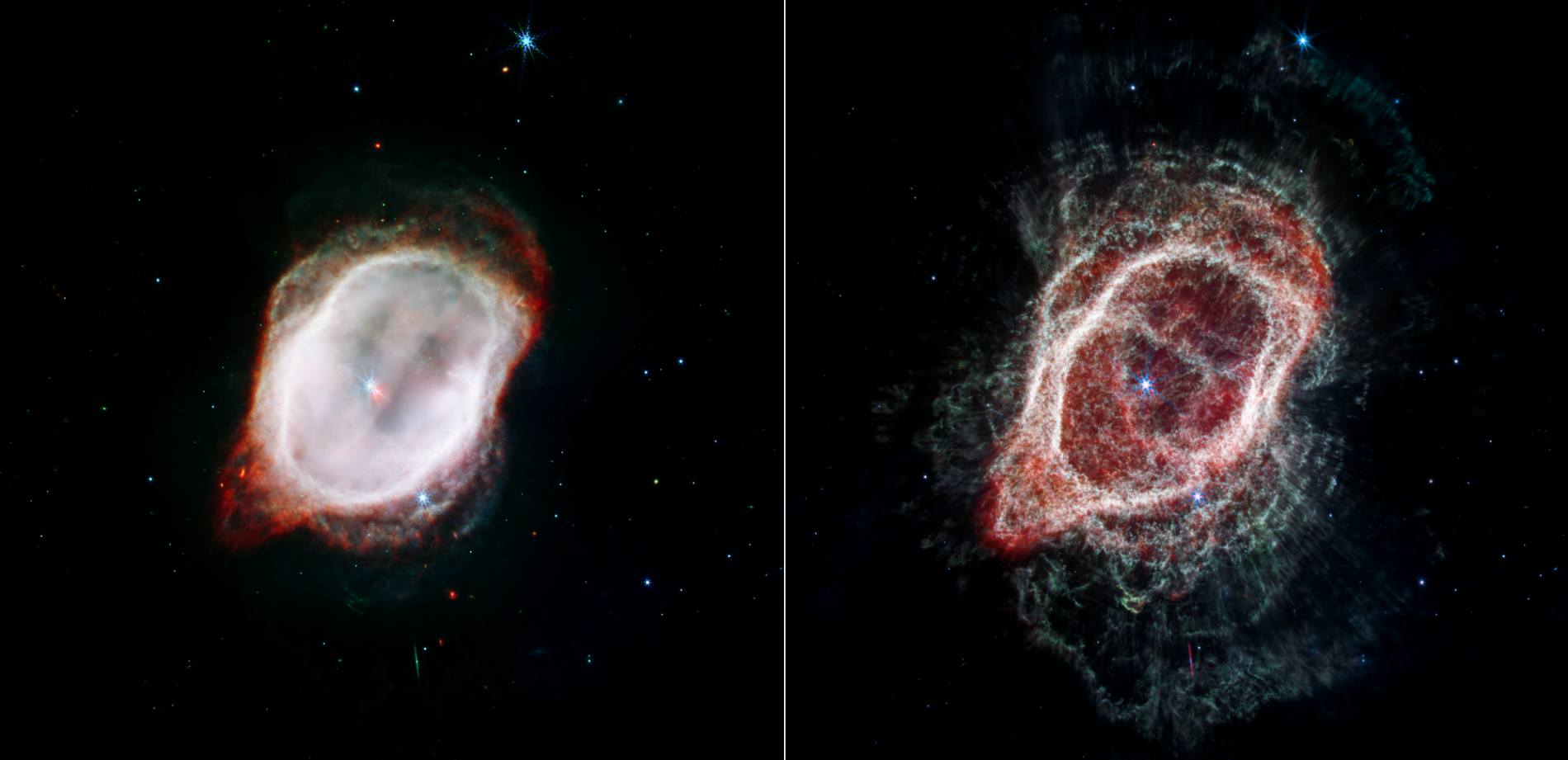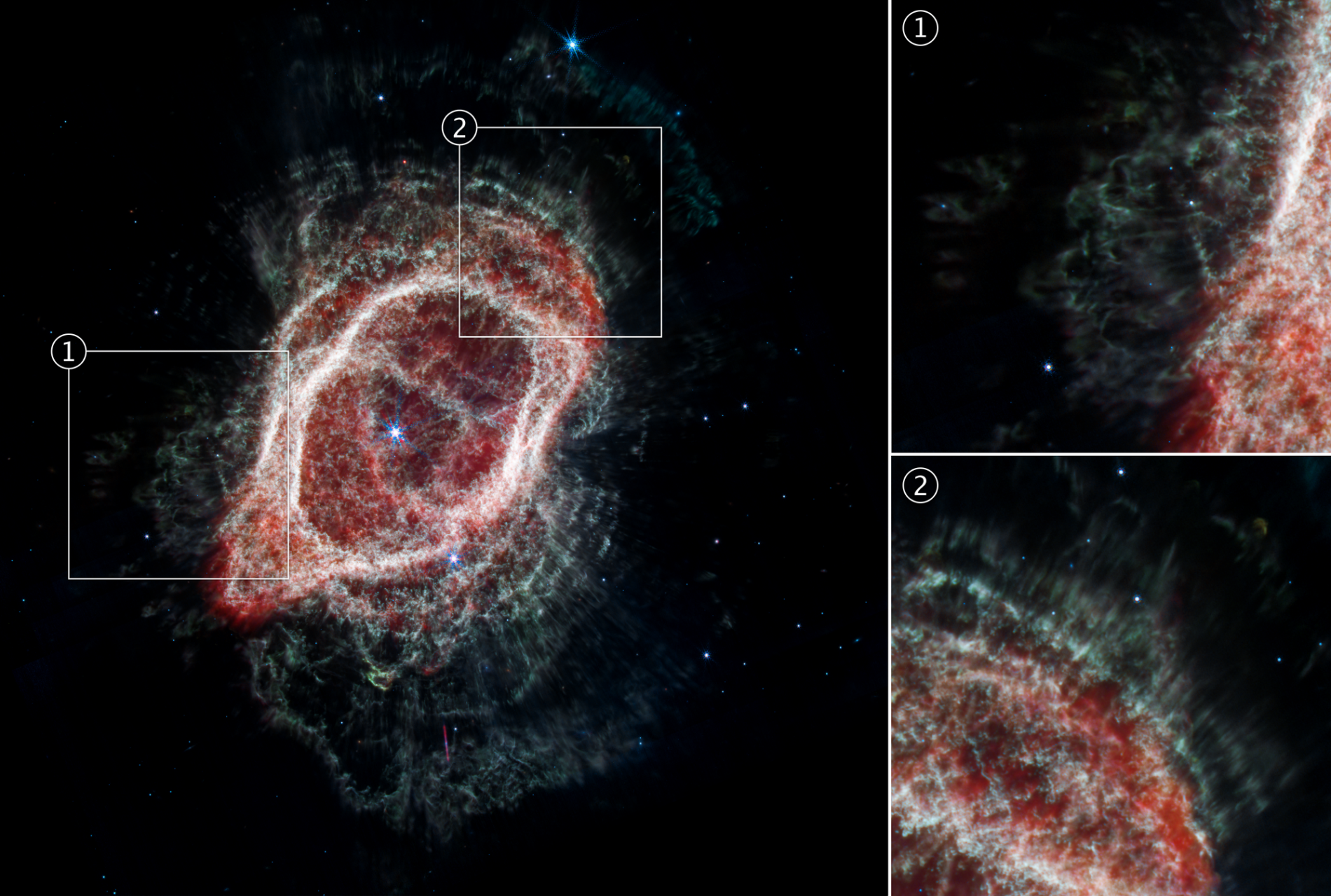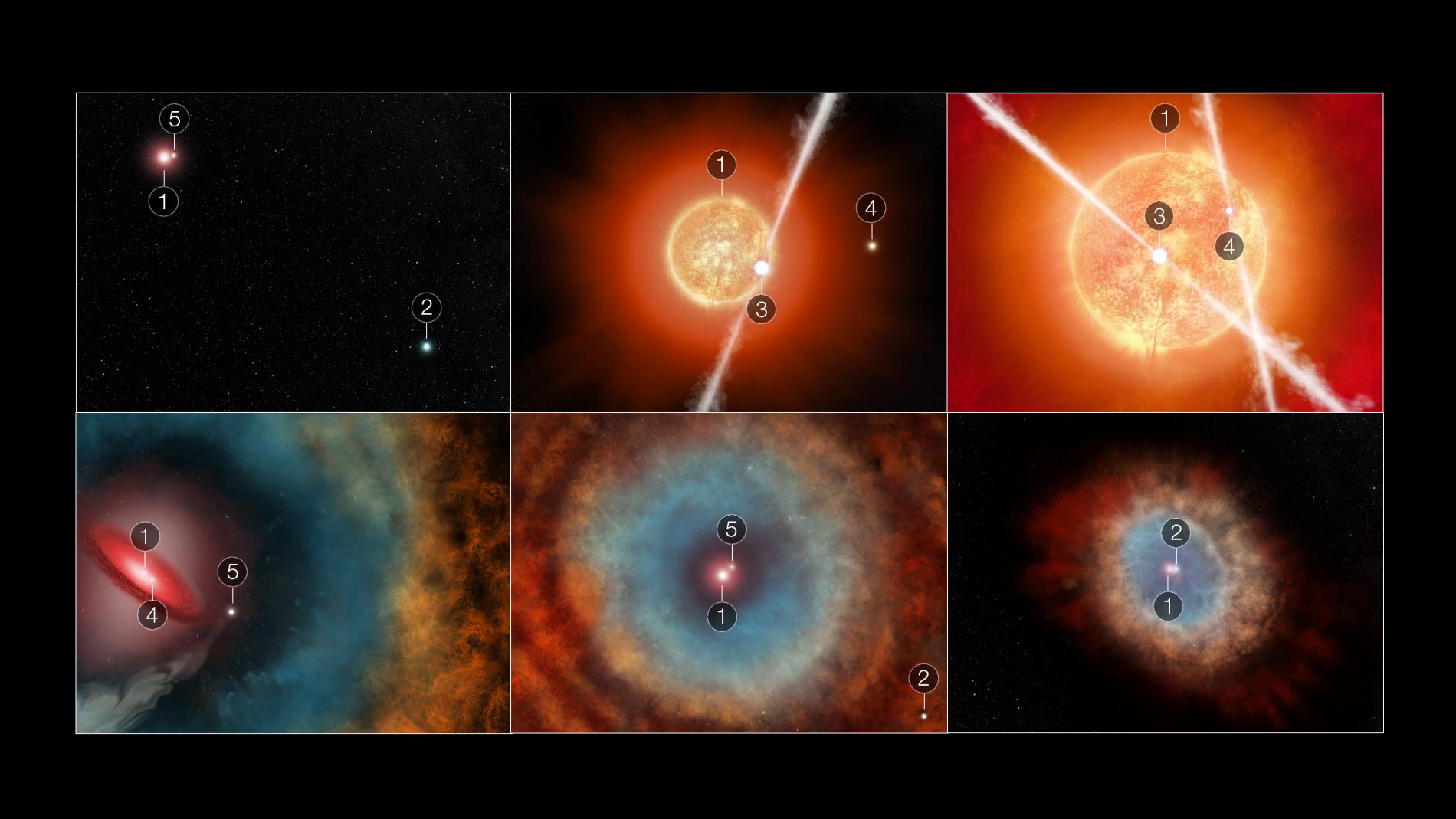The James Webb Telescope reveals that four to five stars were involved in the formation of the Southern Ring nebula
The Institute of Astrophysics of Andalusia (IAA-CSIC) participates in a study that points to the interaction of a multiple star system in the formation of the nebula, which was featured on the cover of the journal Nature Astronomy
Planetary nebulae are one of the final stages in the lives of Sun-like stars. After exhausting their fuel, these stars shed their outer layers, which form a fluorescent envelope around a white dwarf star (the core of the star after the expulsion of its outer layers). These nebulae can take many forms, and some are associated with the existence of double star systems. Now, the James Webb Space Telescope (JWST) has revealed that the Southern Ring nebula shows at least two and possibly three more previously unseen stars, which produced the oblong and curved shapes of the nebula.

An international team has analysed ten detailed JWST images (NASA, ESA, and CSA) of this dying star and, by combining them with data from the Gaia observatory (ESA), was also able to learn that the central star, now about 60% of the mass of the Sun, was nearly three times the mass of the Sun before it ejected its outer layers. Knowing the initial mass allowed the team to reconstruct the scene and determine how the shapes of this nebula, involving the central star and several companions, could have been created.
“With JWST, it's like being given a microscope to examine the universe –says Orsola De Marco, the lead researcher at Macquarie University–. We approach our analysis in much the same way that forensic scientists reconstruct the scene”.
The team first focused on the star that cast off its layers and is still surrounded by dust. It is common for these ageing stars to show discs of dust around them, but in this case the data suggest that this dust, coming from a single star, was thrown in different directions by the companion stars.
The study proposes that, before the dying star shed its layers, it interacted with one or even two smaller companion stars. During this "dance", the stars may have launched jets in opposite directions, which later took shape as the roughly matched projections now seen at the edges of the nebula.

Where are these companion stars now? "Either they are so faint that they are obscured by the two bright central stars, or they have merged with the dying star," says Martín A. Guerrero, a researcher at the Institute of Astrophysics of Andalusia (IAA-CSIC) involved in the work.
The complex shapes of the Southern Ring nebula are an indication of the presence of invisible companions, as their ejections are thin in some areas and thick in others. A third closely interacting star may have deflected the jets, turning their initial directions. A fourth star with a slightly wider orbit could have further scrambled these ejecta, generating the huge set of rings at the outer edges of the nebula. Finally, a fifth star, seen bright and bluish in the JWST images, orbits the dying star slowly, predictably and quietly.

O. De Marco et al. "The messy death of a multiple star system and the resulting planetary nebula as observed by JWST". Nature Astronomy, Dec 2022. https://www.nature.com/articles/s41550-022-01845-2
Instituto de Astrofísica de Andalucía (IAA-CSIC)
Unidad de Divulgación y Comunicación
Silbia López de Lacalle - sll[arroba]iaa.es - 958230676
https://www.iaa.csic.es
https://divulgacion.iaa.csic.es

